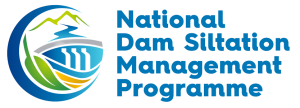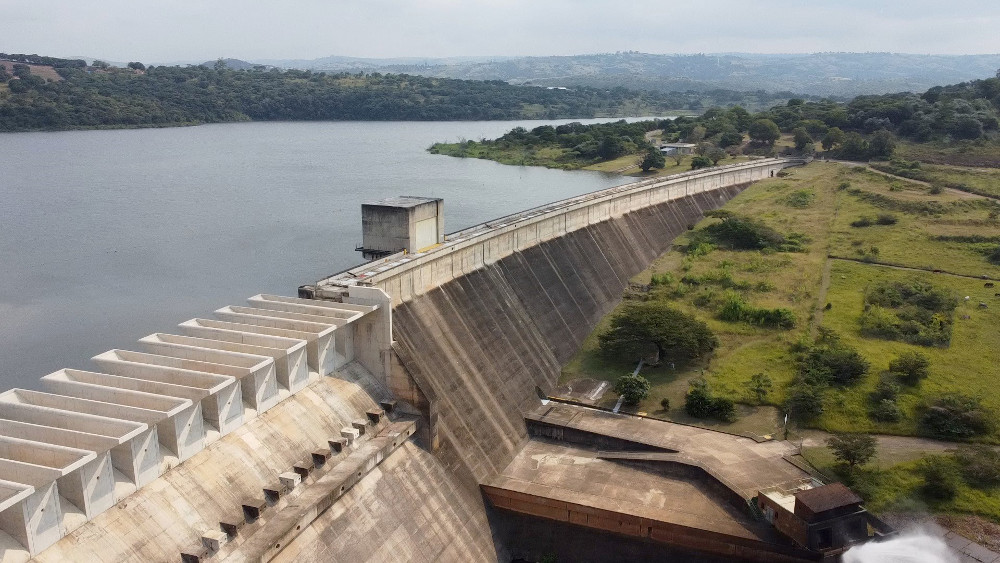South Africa is a semi-arid country which means that the national water infrastructure must be designed to promote and ensure that there is long-term water security. There are multiple threats to water security in South Africa, one of the biggest being the loss of dam storage capacity because of siltation associated with natural processes as well as poor land use planning. According to Dr Shafick Adams, Executive Manager of the Water Resource and Ecosystems impact area at the Water Research Commission, South Africa needs to explore all available water supply options as well as implement water conservation and demand management measures to enable it to adapt to climate change and weather variability, urban and population growth, and ensure equitable access.
Dam siltation is a process where disturbed sediments are transported into the reservoirs where they settle and result in a loss of dam storage capacity. A 2016 study estimated that South African national dam storage capacity loss was 10% due to siltation. This reduction threatens water security which threatens food security, ecosystems, and economic progress in the country.
One of the efforts aimed at ensuring that this threat is addressed, is the National Siltation Management Strategy for Large Dams in South Africa Programme (NatSilt Programme) implemented by the Water Research Commission and funded by the Department of Water and Sanitation (DWS). The Programme aims to develop an overall siltation management strategy as well as a myriad of solutions for siltation management and opportunities to beneficiate removed sediment. The programme has a suite of four sub projects focusing on different aspects of dam siltation management interventions and the outcomes of each will be incorporated in the overall strategy.
The programme will equip the DWS with a decision-making mechanism which will inform the department which dams will be classified as exhaustive storage (where siltation rates are too high; silt-prevention operations will be ineffective and dredging not cost effective) or which will be classified as sustainable storage. It is expected that the latter classification which will allow for either of the dam basin management operations model or dredging business model to be implemented.
For dam siltation management to be successful, the efforts need to address the state of the existing dams, how they should be operated and the activities within their respective catchments. While addressing the dam engineering components of dam siltation management, it is equally important to address the socio-ecological systems aspects of it. One of the components of dam siltation that have been highlighted by the programme implemented by the Water Research Commission is the development of a dam classification framework and dam operations model. The dam classification framework aims to classify dams from exhausted to sustainable and subsequently inform the development of the dam operations model. The dam operations model will recommend strategies that will be suitable for operating specific dams.
Dam engineering has an important role to play in safeguarding water security. However, the design and construction of these dams needs to consider the impact of the dams on society and the ecological systems.
The way in which this has been done in South Africa has resulted in dam siltation not being managed adequately. This can be attributed to the inconsistent monitoring efforts and the lack of holistic approaches when dams are being designed and constructed. This negatively affects the lifespan of the dams. In dam engineering, one of the major focuses should be to ensure that the recommended dam siltation mitigation measures do not cause additional adverse effects on the dams. When dealing with the dam classification and operations model, it is vital to assess the structural integrity of the dams that are being categorised. This is to assess whether the dams can withstand the additional loads exerted on them by the accumulated silts. This must consider the types of dams and the materials used to construct them. This is important as it may be found that the operations model will have to consider the vulnerability of the dam walls when the recommended siltation mitigation measures are implemented and whether dam wall reinforcements will be required.
For any project to successfully meet its objectives, it is important to identify the institutions and stakeholders that will be affected by and affect the project based on their legislative mandates. For dam siltation, this can affect how the implementation of the management strategies will be funded. It is also important to identify and engage private and non-governmental stakeholders that will be affected by and affect the dam siltation management strategy developed as the existence of these dams affect them as well. This is dependent on engaging the correct stakeholders so that their identified roles are incorporated into the dam classification framework and operations model while ensuring that the technical requirements of dam engineering are satisfied.
This could enable the siltation management team to identify, in addition to the DWS, which institutions will be keen to fund not only the future research, but the implementation of the tools developed and ease the financial pressure on taxpayers. To ensure sustainability and success of the dam operations model, workshops must prioritise buy-in from surrounding communities as this will affect their level of commitment to participating in the programmes developed. When people have a sense of ownership of the infrastructure in their communities, they tend to participate in ensuring the longevity of that infrastructure.
The success of the NatSilt Programme will hinge on addressing the institutional fragmentation that is currently making it difficult for dam siltation management to be holistically implemented. This involves the availability of relevant real-time data and information that if not managed efficiently, could prove to be a challenge in the development of a dam classification framework, operations model, and the institutional and financial frameworks.
Dam siltation management in South Africa can be successfully implemented if the relevant stakeholders are engaged and there is a collective commitment to address it. These range from the public institutions, private sector and civil society. The integration of responsibilities and interests can ensure a collective interest and commitment to the longevity of dams and knowledge dissemination amongst the stakeholders. If this can be done, the dam classification framework and operations model can guarantee future designs and management of dams will holistically account for more than just the dam structures, but also the socio-ecological systems as well as stewardship and opportunities for job creation and economic growth.
According to Water Research Commission Senior Project Manager Lesego Gaegane, this can be achieved through multi- and transdisciplinary approaches that will be developed by the NatSilt Programme. Capacity development is a core activity of the programme, accredited skills programmes are being developed to support a new cohort of professionals and transfer skills through the programme and its implementation. It is essential that the programme builds technical and institutional capacity to ensure there are skills within the sector to ensure efficient siltation management and implementation of the interventions. For more information,
visit: https://wrcnatsilt.org.za/


